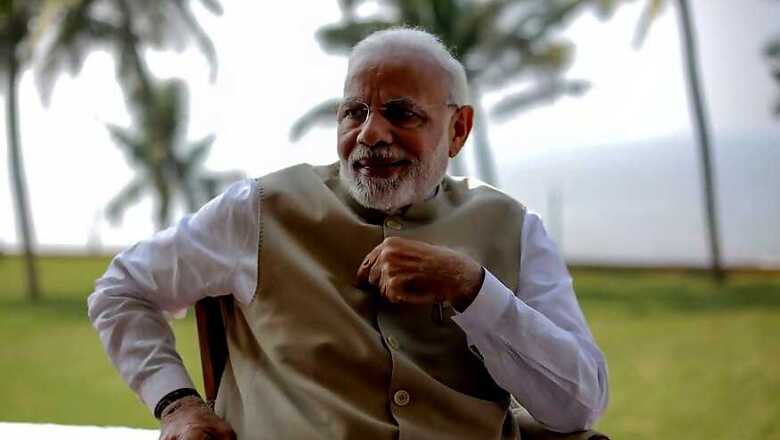
views
No political move in India is driven without caste consideration. Similarly, no analysis of an initiative — administrative, social or political — is complete without putting it through the prism of caste. Social scientists, known for their overt anti-BJP bias, have once again gone to town ridiculing Prime Minister Narendra Modi’s push, this time for appearing in the ‘chowkidar avtar’ in the upcoming Lok Sabha polls.
These social analysts chose the oft-repeated line of upper caste and backward caste divide. Identifying the rich with the upper castes, they have painted the initiative as mocking the Dalit and other backward caste communities. This is often the fundamental premise in upper caste vs the lower caste binary.
However, a random survey of the security guards in the national capital would show that nine of the 10 ‘chowkidars’ belong to the states of Bihar and Uttar Pradesh. More telling is the finding that if not more, at least seven of these 10 ‘chowkidars’ are either upper-caste Rajput, Bhumihar or Brahmin, and in some cases even Baniya and Kayastha.
By the turn of the century, these migrants from Bihar and Uttar Pradesh effectively came to replace the Nepali Bahadurs as the guards in the city. In fact, BJP MP Ravindra Kumar Sinha, who also hails from Bihar, owns a big security agency. A large number of security guard companies are today being managed by Purvanchali contractors and those from central UP districts of Etah, Etawah and Mainpuri.
There is a reason for it. These contractors find it easy to source guards from the districts of central UP and Purvanchal areas. These are the districts where the upper caste rural masses have been greatly affected by the empowerment of the Dalits and OBCs. The upper caste rural youth - there are several historical evidence to it - in the past made it to the police and paramilitary forces in large numbers.
With the implementation of the Mandal Commission recommendations, the upper caste positions representation in govt jobs has shrunk.
In Bihar, the story has been worse. With the rise of Lalu Prasad in Patna and the Maoists in the hinterland, the upper caste youth had to face the double-whammy and preferred shifting out and Delhi NCR, being the El Dorado, was the destination.
Some social scientists may point that migration from these districts of Uttar Pradesh and several districts of Bihar was not community specific. That’s true, but the people from the other backward castes, especially the extremely backwards, came with their skills of barber, carpenter, mason, cook, so on and so forth.
Those not from the skill-possessing communities came with the ability of hard labour and thus were quickly absorbed as unskilled workers in industrial estates and on real estate sites. On the other hand, bereft of any such attributes, upper caste uprooted youth found nourishment in the security agencies. With some ability at reading and writing, these youth were found to be most apt for guarding the gates, which also entailed maintaining logbooks.
With their forefathers having adorned the khaki or the olive-green uniforms, to them, wearing the chowkidar’s blue provided some restoration of self-esteem and massage of the personal ego. They agreed to work for abysmally low wages in the chowkidar’s job as they well understood their shortcomings and the opportunity their job provided them to maintain ‘surveillance’ over industrial workers, safai karamcharis and domestic helps.
One of the major features of this new urban ‘chowkidar’ community is that even as they live as a closely knit diaspora in Delhi and other urban refuges, they maintain a close home connect. No wonder, the security agency owners are at their wit’s end to meet the demands of workload during the Holi and Chhath festivities and summer marriage seasons. These events coincide with sowing and harvest seasons, when these ‘chowkidars’ travel homeward in large numbers.
This also vouches for their poor urban working conditions, which forces them to maintain their home connect. But for some accredited large security companies, most of the agencies hire them on daily basis for 12-hour-long shifts. There is no concept of weekly offs or leave of any nature, be it casual, earned or medical. There are no pensions or social security cover for them. Thus, the need to fall back upon their communities for sustaining themselves both in their place of work and back home.
Coming back to the Prime Minister’s ‘chowkidar avtar’. These security guards are important for the BJP as most of them continue to be voters in their hometowns. The candidates use the security agency contractors to source their campaign to woo these voters to the polling booths.
With the Narendra Modi government providing 10 per cent reservation for the poor among the upper castes, transferring funds from PM pension schemes into the bank accounts of the farmers and pushing ahead with the Ayushman Bharat Yojana for urban poor, the BJP, in the chowkidars, could well have their counter to the caste combinations built by the Samajwadi Party-Bahujan Samaj Party in Uttar Pradesh and the UPA in Bihar.
The Opposition would do well to put their heads together to read the message which the Prime Minister seeks to deliver through the chowkidars. They can ignore it at their own peril.
(The writer is a Political Commentator. Views are personal)

















Comments
0 comment